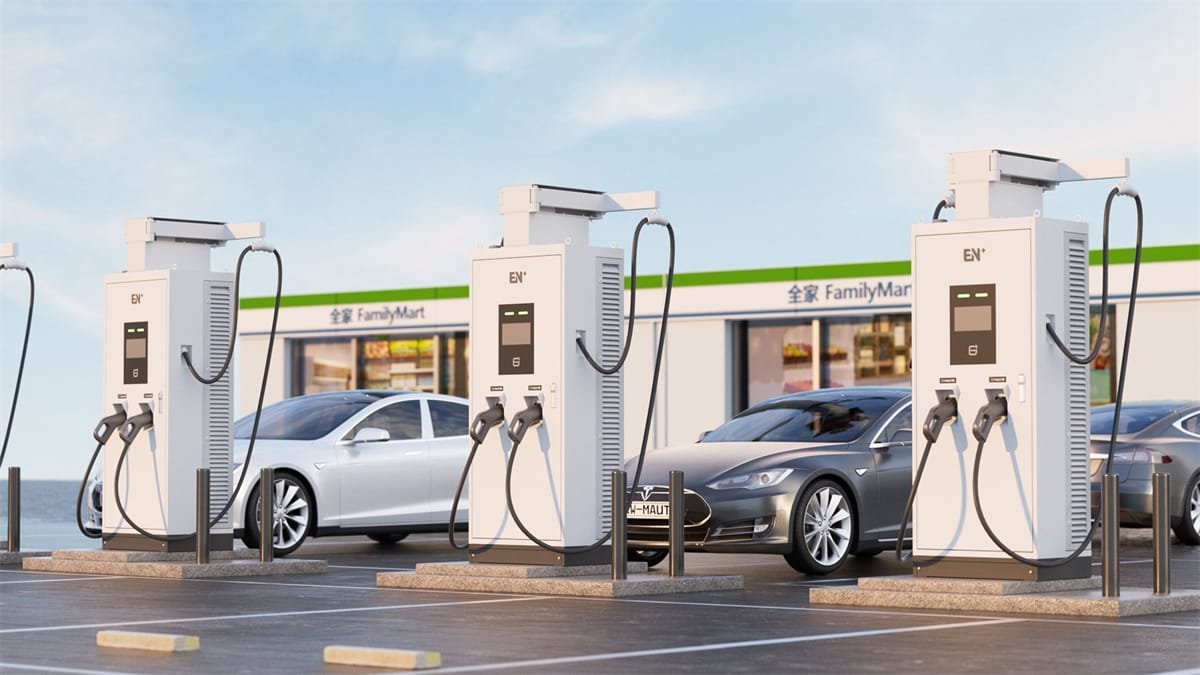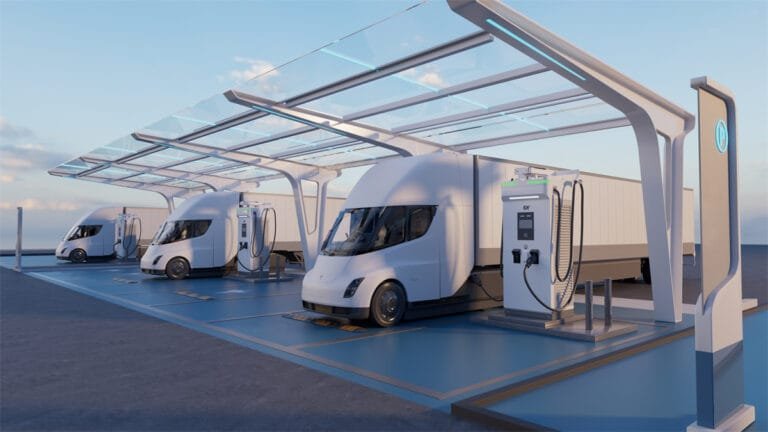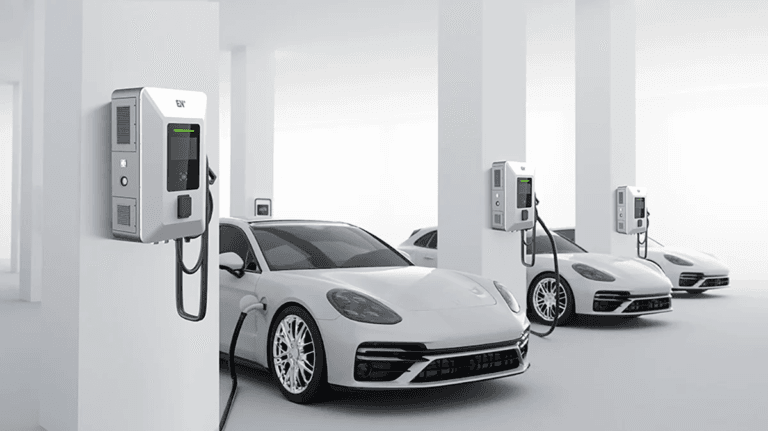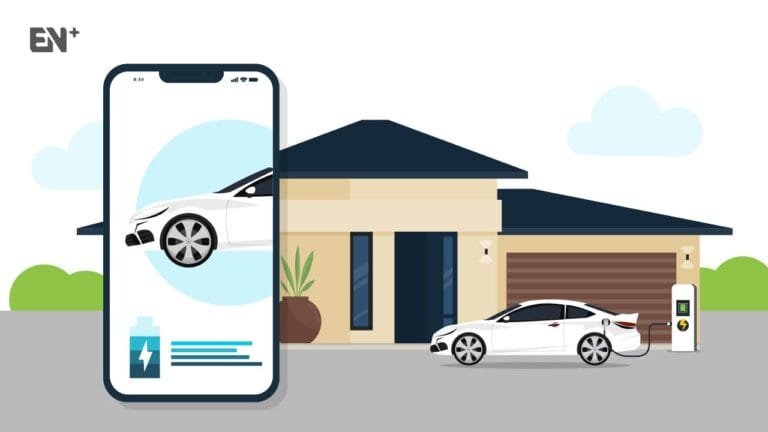Introduction
Imagine turning your parking lot into a profit center. As electric vehicles reshape the retail landscape, forward-thinking businesses are discovering that EV charging stations do more than just power cars – they power business growth. The equation is simple: while customers charge their EVs, they spend time and money in your store.
“EV charging is becoming a key differentiator for retail locations,” says John Eichberger, executive director of the Fuels Institute. “It’s not just about providing a service; it’s about capturing a high-value customer segment that stays longer and spends more.” This observation is backed by hard data: according to a McKinsey study, 70% of EV owners prefer to shop at locations with charging stations, spending an average of 50% more time in stores compared to non-EV customers.
The potential is substantial. A comprehensive Atlas Public Policy report shows that retailers with charging stations see an average increase of 20-30% in customer dwell time, directly correlating with higher sales revenue. Major retailers like Target have already capitalized on this trend, reporting that their customers with EVs spend up to twice as long in their stores compared to the average shopper.

Revenue Opportunities
The revenue potential of EV charging stations extends far beyond the charging fees themselves. According to a 2023 MIT study, businesses with nearby EV charging stations saw an average increase of $23,000 in annual revenue. This boost comes through multiple revenue streams:
Direct Revenue
- Charging Fees: The Bloomberg NEF report projects the US EV charging market to reach $100 billion by 2030, with retail locations positioned to capture a significant share.
- Advertising Revenue: Digital displays on charging stations can generate additional income through advertising, averaging $100-200 per screen monthly.
Indirect Revenue
- Increased Foot Traffic: A ChargePoint retail study shows that 43% of EV drivers make purchases while charging, with an average transaction value 1.5x higher than non-EV customers.
- Customer Loyalty: 80% of EV drivers specifically choose retail locations based on charging availability, creating a reliable customer base.
- Competitive Advantage: Early adopters of EV charging infrastructure report capturing market share from competitors who lack this amenity.
The financial impact is particularly notable in certain retail sectors. According to the National Renewable Energy Laboratory, grocery stores with EV charging stations report a 34% increase in average customer spend, while shopping centers see extended visit durations of up to 50 minutes per charging session.

Changes in Customer Behavior
The rise of EVs is fundamentally reshaping consumer shopping patterns. According to a 2024 Deloitte Global Automotive Consumer Study, over 70% of EV owners are adapting their shopping habits around charging availability. This shift presents a unique opportunity for retailers to capture and capitalize on new consumer behaviors.
Extended Shopping Duration
- Charging Time = Shopping Time: The typical Level 2 charging session lasts 30-60 minutes, creating what retail analysts call “captive time.” A J.P. Morgan study shows that this translates to 25-45 minutes longer store visits compared to traditional shoppers.
- Planned Visits: 65% of EV drivers deliberately plan their shopping around charging sessions, leading to more intentional and frequent store visits.
New Shopping Patterns
- Multi-Purpose Trips: Research from Accenture’s 2023 EV Consumer Survey indicates that 82% of EV owners combine charging with other activities, primarily shopping and dining.
- Premium Customer Segment: EV owners typically represent a higher-income demographic, with an average household income 30% above non-EV owners, according to Experian’s automotive insights.
Digital Integration
- App-Based Planning: 78% of EV drivers use mobile apps to locate charging stations, creating opportunities for retailers to integrate shopping promotions with charging apps.
- Connected Experience: Modern EV drivers expect seamless digital experiences, from finding available chargers to receiving personalized shopping offers while charging.
This behavioral shift is particularly evident in certain retail categories. For instance, Walmart reports that their locations with EV chargers see significantly higher engagement with their grocery pickup services, as customers efficiently combine charging time with their shopping needs.
Competitive Advantages
Installing EV charging stations isn’t just about keeping up with trends—it’s about gaining a strategic edge in an increasingly competitive retail landscape. According to a PwC Consumer Intelligence Survey, 85% of EV owners rank charging availability as a “critical factor” in choosing where to shop.
Market Differentiation
- First-Mover Advantage: Early adopters of EV charging infrastructure are establishing themselves as go-to destinations. Target’s early investment in EV charging has helped them capture a loyal customer base, with over 80% of their EV-charging customers becoming repeat visitors.
- Brand Perception: A 2023 IBM Institute for Business Value study reveals that 73% of consumers view businesses with EV charging facilities as more environmentally responsible and forward-thinking.
Customer Acquisition and Retention
- Premium Customer Base: According to Statista, EV owners’ average household income exceeds $150,000, representing a valuable customer segment with higher spending potential.
- Cross-Shopping Benefits: Multi-tenant retail locations with EV charging stations report a 35% increase in cross-shopping between stores, based on a International Council of Shopping Centers study.
Future-Proofing Business
- Market Growth: Bloomberg NEF projects that EVs will represent 60% of new car sales by 2030, making charging infrastructure increasingly crucial for retail competitiveness.
- Government Support: The Inflation Reduction Act provides significant tax incentives for businesses installing EV charging stations, reducing initial investment costs by up to 30%.
The competitive edge is particularly evident in urban markets. A McKinsey retail analysis shows that shopping centers with EV charging capabilities attract 45% more visitors from outside their traditional trade area compared to those without charging options.
Partnership Opportunities
The EV charging ecosystem presents diverse partnership opportunities that can significantly enhance business value. According to a Deloitte analysis, successful EV charging implementations often involve strategic partnerships across multiple sectors.
Charging Network Operators
- Revenue Sharing Models: Major charging networks like ChargePoint and EVgo offer flexible partnership models. For example, ChargePoint’s retail program allows businesses to earn up to 75% of charging revenue while the operator handles maintenance and operations.
- Operational Support: Network operators provide 24/7 customer support, maintenance, and software updates, reducing the operational burden on retailers.
Automotive Manufacturers
- Co-Branding Opportunities: Tesla’s destination charging program has partnered with over 4,000 retail locations, creating mutual benefits for both parties. According to Reuters, major automakers like GM are following suit with similar partnership programs.
- Customer Referrals: Auto manufacturers often direct their EV customers to preferred charging locations through their vehicle navigation systems and apps.
Payment and Technology Providers
- Integrated Solutions: A Visa study shows that integrated payment solutions can increase charging station usage by up to 45%.
- Loyalty Programs: Companies like Mastercard are developing specialized EV charging rewards programs, offering retailers new ways to participate in loyalty ecosystems.
Local Businesses and Services
- Cross-Promotional Opportunities: The Department of Energy reports that successful charging locations often partner with complementary businesses like coffee shops and restaurants to create comprehensive service offerings.
- Community Integration: Local partnerships can help create charging hubs that serve multiple community needs, increasing overall foot traffic and usage.
These partnerships are proving particularly valuable in creating comprehensive charging solutions. For instance, Walmart’s partnership with Electrify America has led to the installation of charging stations at over 1,300 locations, demonstrating the power of strategic collaboration in building charging infrastructure.
Success Metrics
Measuring the success of EV charging installations requires a comprehensive approach that considers both direct and indirect benefits. According to a Boston Consulting Group analysis, successful retailers track multiple metrics to evaluate their EV charging investments.
Financial Metrics
- Direct Revenue:
- Charging session revenue
- Average revenue per charging session
- Monthly recurring revenue from subscriptions
- Return on Investment (ROI) timeline
- Indirect Revenue Impact: A Simon Property Group study shows:
- 25-35% increase in average transaction value from EV owners
- 40% higher dwell time leading to increased purchases
- Cross-selling opportunities with other services
Operational Metrics
- Utilization Rates: According to Department of Energy data:
- Daily charging sessions per station
- Peak usage times and patterns
- Average charging duration
- Station uptime percentage
- Maintenance Efficiency:
- Mean time between failures
- Average repair response time
- Preventive maintenance compliance rate
Customer Experience Metrics
- User Satisfaction: Based on J.D. Power’s EV Charging Experience Study:
- Customer satisfaction scores
- Net Promoter Score (NPS)
- Charging session completion rates
- Customer feedback and reviews
- App Engagement:
- Mobile app usage statistics
- Reservation system utilization
- Digital payment adoption rates
Environmental Impact
- Sustainability Metrics: The EPA’s greenhouse gas equivalencies calculator helps track:
- Carbon emissions avoided
- Renewable energy utilization
- Environmental impact statements
- Green Certification Progress:
- LEED certification points
- Sustainability goal achievement
- Environmental compliance scores
Market Performance Indicators
- Competitive Position: Research from S&P Global Mobility suggests tracking:
- Market share in local charging network
- Brand awareness metrics
- Customer acquisition costs
- Growth Metrics:
- New customer registration rate
- Repeat customer percentage
- Year-over-year usage growth
For example, Electrify America’s retail partnerships report that locations tracking comprehensive metrics show an average 20% increase in retail sales and a 30% improvement in customer loyalty among EV drivers.
Conclusion
The integration of EV charging infrastructure into retail locations represents a strategic imperative for forward-thinking businesses. With Bloomberg NEF projecting global EV sales to reach 40 million units annually by 2030, retailers who act now position themselves to capture this growing market.
Key Takeaways
- Competitive Edge: Early adopters of EV charging infrastructure position themselves at the forefront of retail innovation.
- Multiple Revenue Streams: Beyond direct charging revenue, EV charging stations drive increased foot traffic and enhanced customer loyalty.
- Strategic Partnerships: Success relies on forming strong partnerships with charging networks, automotive manufacturers, and technology providers.
As demonstrated by EN Plus’s retail and hospitality charging solutions, successful implementation requires careful planning and strategic execution. Those who embrace EV charging infrastructure today will lead tomorrow’s sustainable retail landscape, creating lasting value for their customers and stakeholders.


